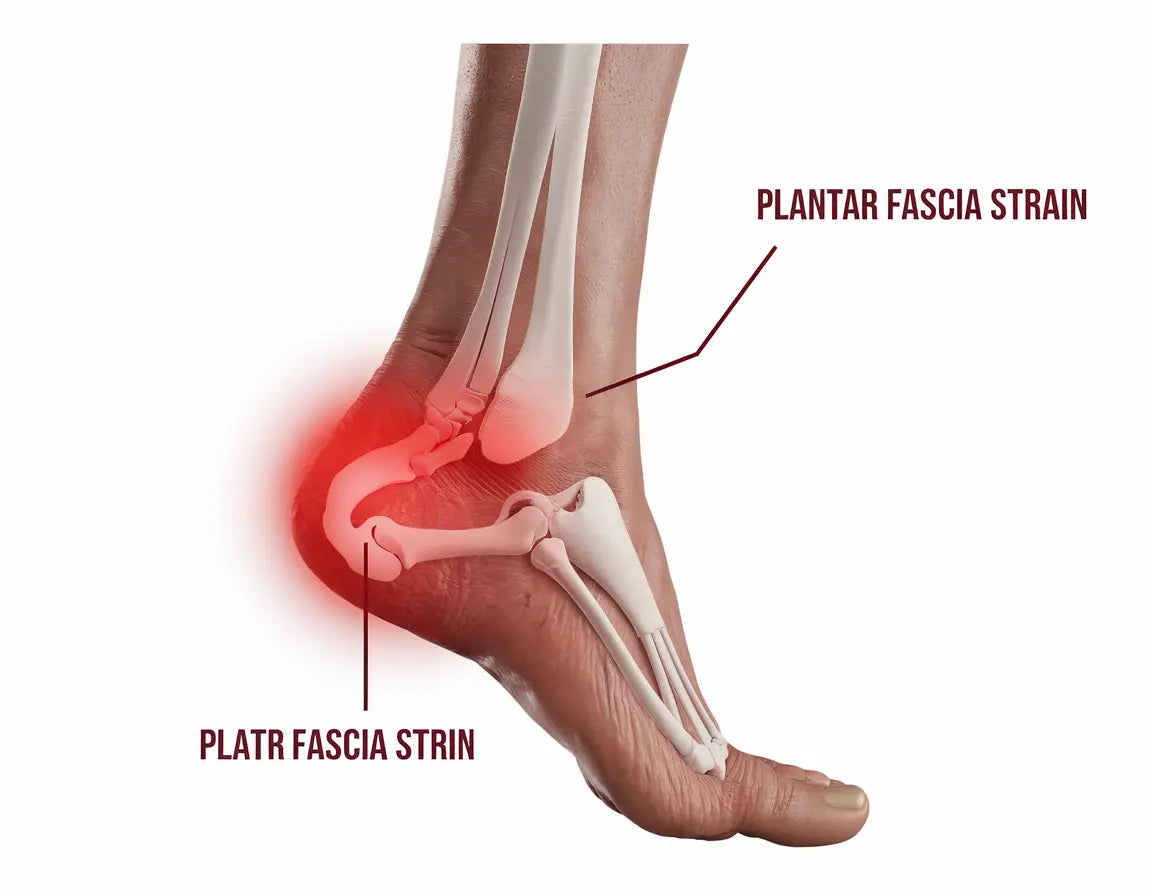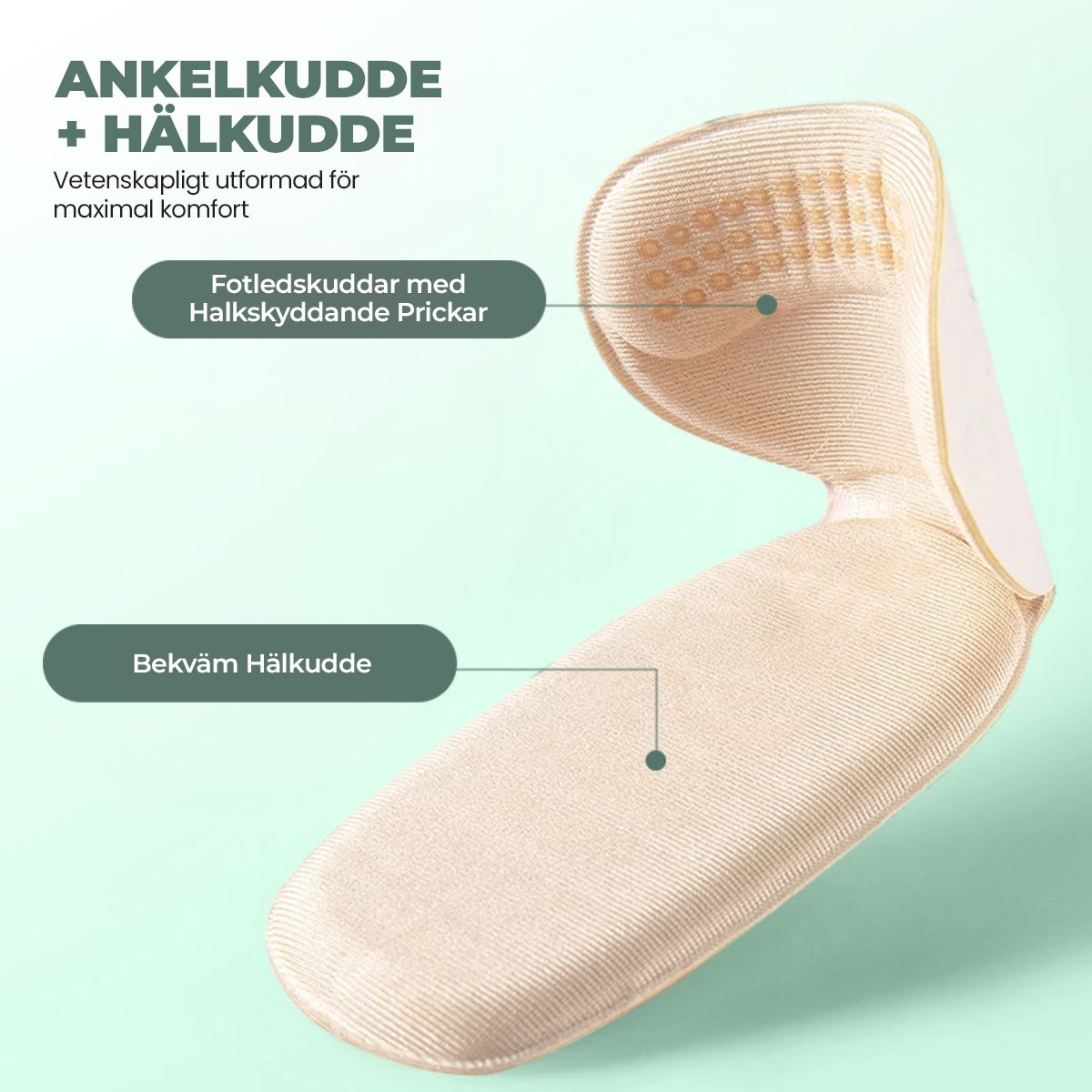Heel Spur: Symptoms, Causes, and Treatment

Heel spur, also known as plantar fasciitis, is one of the most common causes of pain under the heel. Many suffer from this painful inflammation of the foot's tendon attachment, which can significantly affect daily activities and mobility. This comprehensive guide will take you through everything you need to know about symptoms, diagnosis, effective treatment, and preventive measures to manage and eliminate heel spur.
What is Heel Spur?
A heel spur is an inflammation at the tendon attachment under the heel, causing pain and discomfort in the heel area. The name heel spur comes from the fact that a bony growth can sometimes form on the heel bone, but it is the inflammation of the plantar fascia (the tendon under the foot) that causes the issues. Many who suffer from heel spurs find that pain under the heel can take a long time to heal without proper treatment for heel spur.
Symptoms and Issues: When the Tendon Under the Foot is Strained
Common symptoms include:
- Sharp pain under or on the inside of the heel
- Worst pain in the morning or after prolonged rest
- Increased pain with weight-bearing or prolonged standing
- Stiffness in the heel and arch of the foot
- Pain that may decrease after some movement
Heel spurs often cause the most intense symptoms during the first steps in the morning or when rising after sitting for a long time. The pain may lessen somewhat after walking for a while but often returns when walking or standing for extended periods. Plantar fasciitis is characterized by this typical pain pattern that worsens after rest.
Causes and Risk Factors: Why Do You Get Heel Spurs?
Several factors can contribute to the development of heel spurs:
- Overuse from prolonged standing or walking
- Inappropriate shoes with poor cushioning
- High or low arches
- Obesity
- Intense running or jumping on hard surfaces
You also have an increased risk of developing heel spurs if you have a job that requires you to stand a lot, if you have pronation (inward rotation) of your foot, or if the sole of your shoes is too hard. It’s important to review your footwear and possibly add cushioning insoles to prevent heel spurs from recurring. Plantar fasciitis occurs when the supported tendon in the arch of your foot is subjected to repeated strain and tension.
Diagnosis, Treatment, and When to Seek Care
| Behandlingsmetod | Beskrivning | Fördelar med hälsporreinlägg |
|---|---|---|
| Vila och stretching | Avlastar och töjer plantarfascian | Ger stöd och avlastning |
| Anpassade skor och inlägg | Förbättrar fotens position och stötdämpning | Specialdesignade för hälsporre |
| Smärtlindring | NSAID eller paracetamol vid behov | Kan minska behovet av medicin |
| Fysioterapi | Övningar och manuell behandling | Kompletterar behandlingen |

Heel Spur Treatment: How the Right Insoles and Taping Alleviate Pain
Heel spur insoles from Komforten offer several benefits for individuals with heel spurs:
- Provides support and relief to the heel area
- Improves foot positioning and shock absorption
- Reduces strain on the inflamed tendon
- Can be used in various types of shoes for consistent support
- Aids in relieving pain and discomfort during daily activities
Taping the heel can also provide good relief. By taping the foot correctly, one can support the plantar fascia and reduce strain on the tender point. You can learn to tape your heel spur yourself or seek assistance from a physiotherapist. Special tape for this purpose is often available at pharmacies. Effective treatment of heel spurs often combines multiple methods to achieve the best results.
Buy nowConclusion: Healing Heel Spurs with the Right Treatment and Exercises
Heel spurs can be a painful and long-lasting condition, but with the right treatment and support, most individuals can effectively manage their symptoms. By combining conservative treatment methods such as rest, stretching, and the use of specially designed heel spur inserts, significant improvements can often be achieved. It is important to be patient, as healing may take time, and to consult a doctor or foot specialist for an individualized treatment plan.
Regularly performing specific heel spur exercises and providing shock-absorbing support for the foot is often key to successful treatment. Remember that it may take several months for plantar fasciitis to heal completely, but with proper heel spur treatment, most people can return to normal activities without pain.
Frequently Asked Questions (FAQ): Treatment for Heel Spurs and Related Symptoms
How long does heel spur usually last?
Can I continue to train with heel spur?
Yes, but it's important to adjust the activities. Try low-impact exercises like swimming or cycling.
How quickly can I expect results with heel spur inserts?
Many experience some relief immediately, but full effect may take a few weeks of regular use.
Is surgery necessary for heel spur?
Can heel spur come back?
Yes, heel spurs can recur. Continued use of supportive insoles and good shoes can help prevent relapses.
